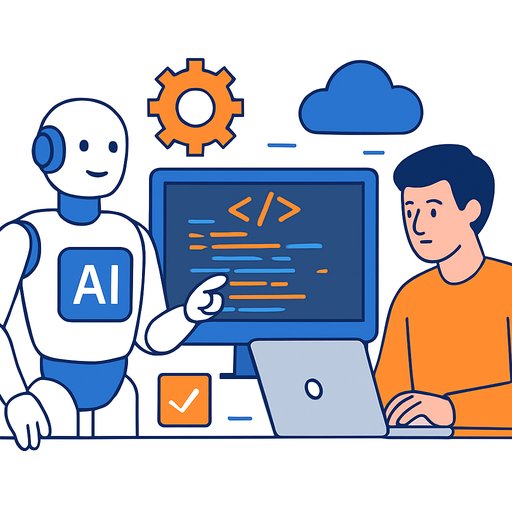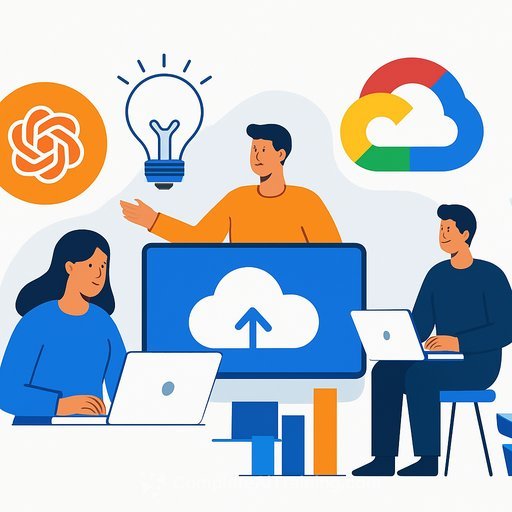How Development Teams Are Rethinking the Way They Build Software
Software delivery is shifting. Low-code/no-code tools and AI are taking on repetitive work, freeing teams to focus on product strategy, UX, and hard problems that actually move metrics.
None of this replaces developers. It changes what they spend time on. The result: fewer hours spent on boilerplate, more energy on architecture, integration, and outcomes.
Programming Paradigms at a Glance
Low-code/No-code lets teams assemble apps with visual builders, templates, and drag-and-drop components. Think Google Forms for data capture, WordPress and Shopify for content and commerce, and App Builder for richer front-end work. This gives product teams a faster way to test ideas and ship internal tools.
Adoption is already mainstream: 71.8% of developers use low-code/no-code, and 90.4% say it lifts productivity. Analysts project that by 2025, 70% of new apps will use low-code/no-code in some capacity. These tools aren't a fad-they're part of the stack.
AI-assisted development generates and reviews code from plain-language prompts. It accelerates prototyping and repetitive tasks, but output can vary. Without guardrails, you'll invite inconsistencies and integration headaches in larger systems.
Developers are using AI, but with healthy skepticism. According to the 2024 Stack Overflow Developer Survey, 62% of professionals use AI tools (up from 44% last year), 76% use or plan to use them, and 72% have a positive outlook. Still, 31% doubt accuracy, and 45% don't trust AI with complex tasks. That's the right stance: leverage AI, but keep humans in the loop.
Traditional programming remains the foundation for complex, highly customized systems where performance, scalability, and deep control matter. It's not going anywhere.
- The software development market is projected to reach $858.10B by 2028 (5.27% CAGR).
- 84.7% of software projects focus on enterprise applications.
- JavaScript leads usage, preferred by 65.82% of pros.
- 54% of engineers report higher productivity working from home.
- IoT is expected to exceed 75B devices in 2025.
- 69% of businesses have adopted cloud computing.
- About 15% of businesses use modern third-party frameworks (e.g., Ignite UI for Angular) for pre-built, high-performance UI components.
The Three Pillars: How Product Teams Should Decide
1) Time to Market
Speed wins sprints, not marathons. Use the fastest method that meets quality, compliance, and integration needs.
- Low/No-code: Rapid for simple to moderately complex apps, prototypes, and internal tools. Great when customization isn't critical.
- Traditional code: Necessary for systems with strict performance, security, and scalability requirements.
- AI: Boosts throughput in existing workflows, accelerates scaffolding and tests, and helps junior devs learn best practices.
2) Customization vs. Complexity
As customization grows, complexity stacks up. Low-code/no-code can become rigid under heavy specialization, while AI outputs can drift without constraints.
- Low/No-code: Faster starts, but set clear component libraries, naming conventions, and governance to avoid sprawl.
- AI: Strong for code suggestions and refactors, best inside a controlled toolchain (linting, tests, review, security scans).
- Traditional code: The path for edge-case logic, performance-critical modules, or deep integrations.
3) Skill Evolution
Your team's value shifts from typing code to directing systems that write code. Prompting, reviewing, and integrating become core skills.
- Encourage hands-on coding for fundamentals. Then layer in low-code and AI fluently.
- Build a prompt library, teach prompt patterns, and standardize review criteria for AI-generated changes.
- Upskill across roles: PMs, designers, QA, and architects can all use AI to move faster-safely.
What Product Leaders Should Expect
Developers report spending less time on repetitive tasks and more time reviewing, integrating, and improving. Code isn't the bottleneck anymore-context, quality gates, and architecture are.
This makes product ops and engineering ops more important. Clear guardrails, reusable components, and consistent patterns compound speed across teams.
Practical Playbook
- Audit your portfolio: Tag initiatives by complexity, compliance, and differentiation. Assign the fastest-fit approach per tag.
- Create a platform baseline: Choose a low-code/no-code platform and define a governed component library. Lock down data models and integrations.
- Operationalize AI: Add AI to IDEs and code review. Require tests, security checks, and human sign-off for AI-generated changes.
- Ship starter kits: Templates for internal tools, CRUD apps, dashboards, and forms. Include analytics, auth, and deployment scripts.
- Measure the right things: Track lead time, MTTR, escaped defects, user activation, and business impact-not lines of code.
- Train for leverage: Teach prompt patterns, code review heuristics, and system design. Build a shared repository of prompts and examples.
- Guardrails for quality: Define boundaries for AI use (what's allowed, what's not), data handling rules, and versioned prompts for repeatability.
- Evolve roles: Introduce AI champions, platform engineers for low-code governance, and product engineers who own outcomes end-to-end.
When to Use What (Simple Rules)
- Use low/no-code if you need usable software fast, customization is moderate, and the app is internal or non-differentiating.
- Use AI to scaffold code, write tests, draft docs, migrate patterns, and speed up reviews-always with automated checks and human oversight.
- Use traditional code for performance-critical paths, complex domain logic, security-sensitive work, and long-lived core systems.
Skill Building for Your Team
If you want your org to move faster without sacrificing quality, invest in practical training: prompting, code review, and systems thinking. Start with focused resources your team can apply immediately.
- AI courses by job for role-specific upskilling.
- Prompt engineering to standardize how your team works with AI.
The future is blended: traditional programming for depth, low-code/no-code for speed, and AI for leverage. Pick your tools with intention, set firm guardrails, and keep your team's core skills sharp. That's how you ship faster and build better products.
Your membership also unlocks:






